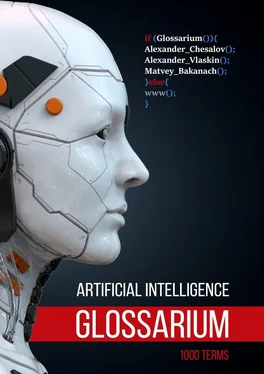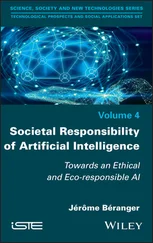Behavior informatics (BI) (Информатика поведения) —The informatics of behaviors so as to obtain behavior intelligence and behavior insights.
Behavior tree (BT) (Дерево поведения) –A mathematical model of plan execution used in computer science, robotics, control systems and video games. They describe switchings between a finite set of tasks in a modular fashion. Their strength comes from their ability to create very complex tasks composed of simple tasks, without worrying how the simple tasks are implemented. BTs present some similarities to hierarchical state machines with the key difference that the main building block of a behavior is a task rather than a state. Its ease of human understanding make BTs less error-prone and very popular in the game developer community. BTs have shown to generalize several other control architectures [ 76 76 Behavior tree (BT) [Электронный ресурс] // habr.com URL: https://habr.com/ru/company/cloud_mts/blog/306214/ (дата обращения: 31.01.2022)
].
Belief-desire-intention software model (BDI) (Модель убеждений, желаний и намерений) —A software model developed for programming intelligent agents. Superficially characterized by the implementation of an agent’s beliefs, desires and intentions, it actually uses these concepts to solve a particular problem in agent programming. In essence, it provides a mechanism for separating the activity of selecting a plan (from a plan library or an external planner application) from the execution of currently active plans. Consequently, BDI agents are able to balance the time spent on deliberating about plans (choosing what to do) and executing those plans (doing it). A third activity, creating the plans in the first place (planning), is not within the scope of the model, and is left to the system designer and programmer. [ 77 77 Belief-desire-intention software model (BDI) [Электронный ресурс] // fccland.ru URL: https://fccland.ru/stati/22848-model-ubezhdeniy-zhelaniy-i-namereniy.html (дата обращения: 31.01.2022)
]
Bellman equation (Уравнение Беллмана) –named after Richard E. Bellman, is a necessary condition for optimality associated with the mathematical optimization method known as dynamic programming. It writes the “value” of a decision problem at a certain point in time in terms of the payoff from some initial choices and the “value” of the remaining decision problem that results from those initial choices. This breaks a dynamic optimization problem into a sequence of simpler subproblems, as Bellman’s “principle of optimality” prescribes [ 78 78 Bellman equation [Электронный ресурс] //mruanova.medium.com URL: https://mruanova.medium.com/bellman-equation-90f2f0deaa88 (дата обращения 28.02.2022)
].
Benchmark (also benchmark program, benchmarking program, benchmark test) (Бенчмарк) –test program or package for evaluating (measuring and / or comparing) various aspects of the performance of a processor, individual devices, computer, system or a specific application, software; a benchmark that allows products from different manufacturers to be compared against each other or against some standard. For example, online benchmark – online benchmark; standard benchmark – standard benchmark; benchmark time comparison – comparison of benchmark execution times. [ 79 79 Benchmark [Электронный ресурс] // URL: https://medium.com/@tauheedul/it-hardware-benchmarks-for-machine-learning-and-artificial-intelligence-6183ceed39b8 (дата обращения 11.03.2022)
].
Benchmarking ( Бенчмаркинг)is a set of techniques that allow you to study the experience of competitors and implement best practices in your company.
BETA (БЕТА версия)A beta publication refers to a phase in online service development in which the service is coming together functionality-wise but genuine user experiences are required before the service can be finished in a user-centered way. In online service development, the aim of the beta phase is to recognize both programming issues and usability-enhancing procedures. The beta phase is particularly often used in connection with online services and it can be either freely available (open beta) or restricted to a specific target group (closed beta). [ 80 80 BETA [Электронный ресурс] www.sofokus.com URL: https://www.sofokus.com/glossary-of-digital-business/#ABCD (дата обращения: 07.07.2022)
]
Bias (Погрешность)is a systematic trend that causes differences between results and facts. Error exists in the numbers of the data analysis process, including the source of the data, the estimate chosen, and how the data is analyzed. Error can seriously affect the results, for example, when studying people’s shopping habits. If the sample size is not large enough, the results may not reflect the buying habits of all people. That is, there may be discrepancies between survey results and actual results.
Biased algorithm (Алгоритмическая предвзятость) – systematic and repetitive errors in a computer system that lead to unfair results, such as one privilege persecuting groups of users over others. Also, sexist and racist algorithms.
Bidirectional (BiDi) (Двунаправленность) –A term used to describe a system that evaluates the text that both precedes and follows a target section of text. In contrast, a unidirectional system only evaluates the text that precedes a target section of text.
Bidirectional Encoder Representations from Transformers (BERT) (Представления двунаправленного кодировщика от трансформаторов) – A model architecture for text representation. A trained BERT model can act as part of a larger model for text classification or other ML tasks. BERT has the following characteristics: Uses the Transformer architecture, and therefore relies on self-attention. Uses the encoder part of the Transformer. The encoder’s job is to produce good text representations, rather than to perform a specific task like classification. Is bidirectional. Uses masking for unsupervised training.
Bidirectional language model (Двунаправленная языковая модель) –A language model that determines the probability that a given token is present at a given location in an excerpt of text based on the preceding and following text.
Big data ( Большие данные)is a term for sets of digital data whose large size, rate of increase or complexity requires significant computing power for processing and special software tools for analysis and presentation in the form of human-perceptible results.
Big O notation ( Запись Big O notation) – A mathematical notation that describes the limiting behavior of a function when the argument tends towards a particular value or infinity. It is a member of a family of notations invented by Paul Bachmann, Edmund Landau, and others, collectively called Bachmann – Landau notation or asymptotic notation [ 81 81 Big O notation [Электронный ресурс] // upread.ru URL: https://upread.ru/art.php?id=659 (дата обращения: 04.02.2022)
].
Bigram ( Биграмм) – An N-gram in which N=2.
Binary choice regression model (Регрессионная модель бинарного выбора)is a regression model in which the dependent variable is dichotomous or binary. Dependent variable can take only two values and mean, for example, belonging to a particular group.
Читать дальше












